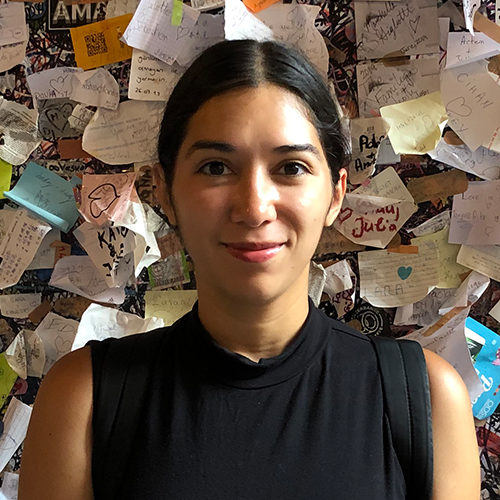Build a thematic unit on magical realism with 7 fantastical short stories from CommonLit’s digital library!
Interested in diving deeper into the fantasy genre? With CommonLit’s free online reading program, you can enhance your ELA curriculum with 7 magical realism stories for middle and high school students. The magical realism genre encompasses realistic stories that feature magical elements, combining reality with fantasy.
In this blog post, we’ve compiled 7 fantastical short stories, discussion questions, and related media videos that will boost your students’ reading comprehension and engagement.
“San Martín in the Mist” by Laura Resau (6th Grade)
In this magical realism story, Alita faces a challenge when the mayor of her town threatens to destroy sacred land by building a dam. Inspired by her grandfather, Alita acts courageously to preserve the forest.
Show students the Related Media video “This Chef Keeps the Flavors of Ancient Mexico Alive,” which features a world-famous chef who cooks food of the Zapotec people. The Zapotec people are the largest Indigenous group in Mexico, which Alita and the village people are likely part of. After the video, lead a classroom discussion and ask students to make connections between the video and the story.
“The Falling Girl” by by Dino Buzzati (translated by Lawrence Venuti) (8th Grade)
Marta, a teenage girl, descends from the top of a skyscraper. She feels beautiful and confident, capturing the attention of wealthy people as they call out to her from their windows. As Marta gets closer to the ground, she realizes she’s growing old and begins feeling insecure.
Show the Related Media video “Magical Realism in 6 Minutes: Literary Fantasy or Fantastic Literature” to help students understand the magical realism genre. After the video, ask students the following question, “Can you think of other works of literature, television, film, or art that you would categorize as magical realism?”
“Huevos Estrellados” by Vanessa Bernice De La Cruz (9th grade)
This magical realism story focuses on an estranged relationship between the protagonist and her father as they eat breakfast together. They both order a meal that evokes the protagonist’s childhood memories, causing her to have an out-of-body experience. She finds herself floating in the diner and sees herself as a child when she and her father go their separate ways.
Ask students to take notes on the girl’s relationship with her father as the story progresses. They can use their notes to demonstrate their reading comprehension in their answer for Assessment Question 5, “How does the description of the narrator transforming into her younger self contribute to the development of the story.”

“The Nose” by Nikolai Gogol (9th Grade)
One morning, Major Kovaloff realizes that his nose is missing before he finds it animated and fully dressed in the streets. After the nose disappears again, Kovaloff seeks help from several people to find it, but they refuse to believe his story.
Ask students to take notes on symbolism in the story in preparation for Assessment Question 10, “What does the nose symbolize? Why?”
“Showdown” by Shirely Jackson (9th Grade)
Billy has a normal day until he witnesses the town’s despicable Thad Ruskin kill his daughter’s beloved, Tom Harper. A few days after Tom Harper’s death, Billy feels something strange happening in his town, but he cannot explain it. Soon, Billy realizes that the town has been stuck in a time loop since the day of Tom Harper’s murder.
As students read, have them take notes on Billy’s observations about the town after Tom Harper’s death. They can use their notes to answer Assessment Question 5, “How does Billy’s realization that he is reliving the day of Tom Harper’s death contribute to the theme of the story? Use evidence from the text to support your response.”
“The Metamorphosis” by Franz Kafka (11th Grade)
This popular magical realism story begins with a traveling salesman who wakes up one morning and discovers that he has transformed into a giant insect. His appearance alienates him from society, forcing him to become completely dependent on his family, who take care of him until they find him burdensome.
Start a classroom discussion by asking students Discussion Question 2, “In ‘The Metamorphosis,’ Kafka pushes readers to consider accepting something impossible: that a human being could suddenly be transformed into a beetle. How does Kafka make us accept this reality?” This question will help students understand the main idea of the story.

“A Very Old Man with Enormous Wings” by Gabriel Garciá Márquez (12th Grade)
An old man with wings lands in Pelayo and Elisenda’s backyard. Curious onlookers crowd their home to see the angel, inspiring Elisenda’s idea to charge them for admission and make a show of him, until he gains the strength to fly away.
Build students’ reading comprehension by encouraging them to dive deeper into the text in a classroom discussion. Ask Discussion Question 4, “How does this story exemplify the qualities of the magical realism genre?”
Next Steps
Looking for more magical realism and fantasy short stories to supplement your reading curriculum? Check out our CommonLit library!
If you’re interested in learning all about CommonLit’s free digital literacy program, join one of our upcoming webinars!


